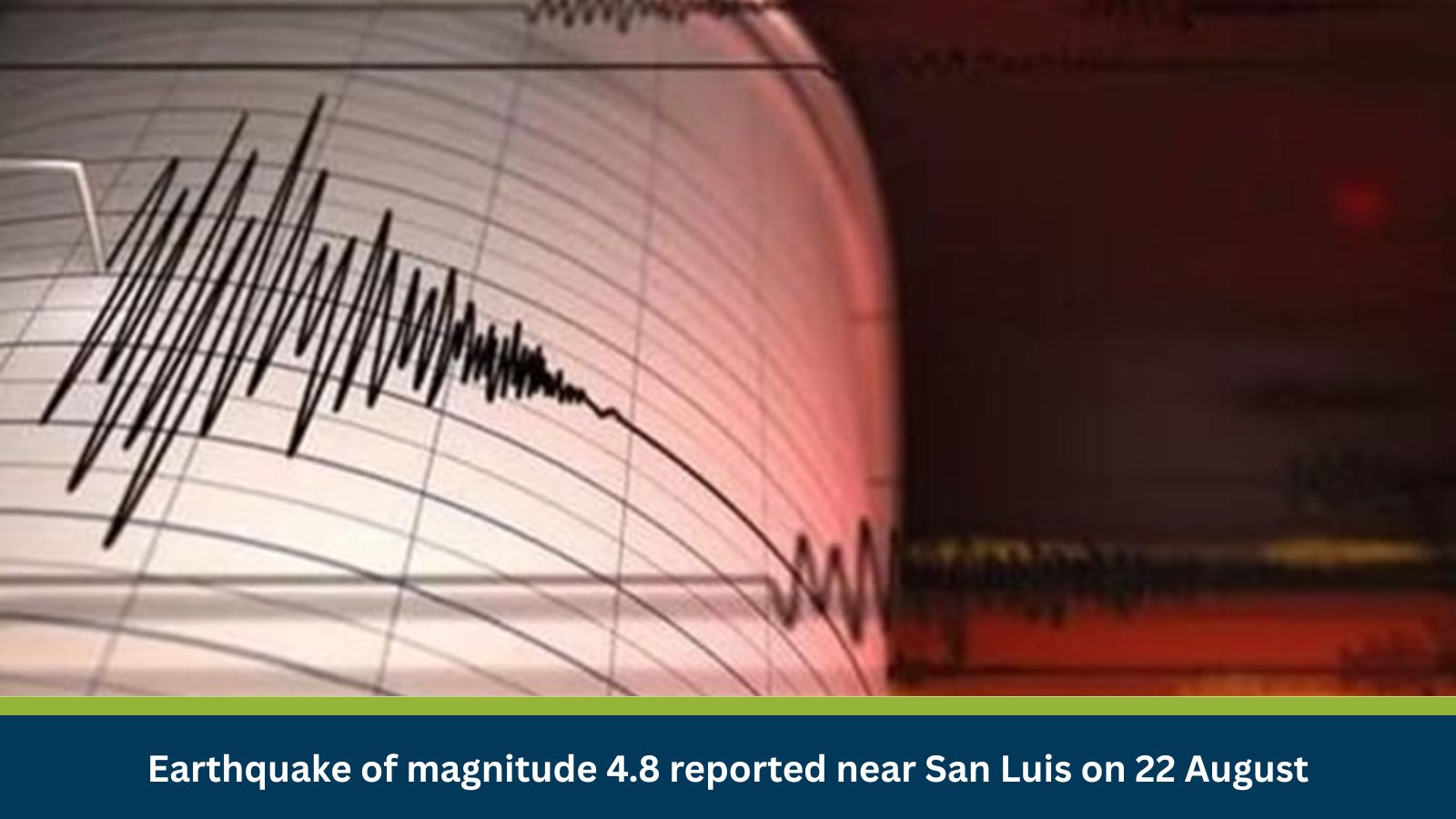What is Risk Analysis in the Context of Natural Disasters?
This report assesses the risks of a seismic event in the Philippines. The analysis helps organizations prepare for potential operational challenges related to infrastructure resilience and supply chain stability in the aftermath of an earthquake. It is a critical tool for ensuring employee safety and operational resilience.
Executive Summary
- Date of Incident: 22 August 2025
- Location: San Luis, Philippines
- Risk Category: Natural Disasters
- Severity Score: 2/5
- Confidence Level: 90%
A Magnitude 4.8 earthquake struck near San Luis, Philippines. The immediate risk of severe widespread damage is low, but the region’s high seismicity suggests a likely duration for aftershocks of approximately 24-72 hours. While a direct M4.8 event rarely causes significant structural collapse, localized minor damage and temporary disruptions are plausible. Our assessment indicates a moderate severity for localized impact with high confidence.
Known Hotspots and Sensitive Areas
The primary sensitive area is the barangay of San Luis, Cateel, Davao Oriental, due to its proximity to the epicenter. Other potentially sensitive areas include older or informal settlements within the broader Cateel municipality and coastal areas prone to minor liquefaction or small landslides in the event of sustained shaking.
Impact on Transportation and Services
- Travel & Mobility: Brief, localized delays or inspections on roads and bridges; major infrastructure damage leading to widespread closures is improbable for this magnitude.
- Business Operations: Potential for temporary operational pauses due to shaking and employee safety checks, with minimal to no long-term disruption in most cases.
- Asset Security: Localized minor damage to non-structural elements in older or less-resilient buildings; major structural damage is unlikely.
- Infrastructure & Utilities: Minor and localized utility disruptions possible, but widespread outages or severe damage are not expected.
- People Safety: Minor risk of injuries from falling objects or panic, but direct fatalities are historically rare for M4.8 events in the region.
Recommended Actions
- Immediately activate ‘Drop, Cover, and Hold On’ protocols for all personnel, followed by an orderly evacuation to pre-designated safe assembly points.
- Conduct rapid visual assessments of facility structural integrity, critical infrastructure, and potential hazards before allowing re-entry.
- HR must initiate a full employee accountability check using designated emergency communication channels and arrange for immediate first aid or psychological support services as needed.
- The designated Incident Management Team (IMT) should activate to coordinate recovery efforts across all relevant departments.
- IT department must prioritize verification of data integrity and activate failover to off-site backup systems.
- Operations and Supply Chain leadership should assess impacts on inventory, production lines, and logistics.
- Proactively engage the crisis communication plan to provide transparent and empathetic updates to employees, clients, suppliers, and regulatory bodies.
Emergency Contacts
- Police: 911
- Fire Department: 911
- Ambulance: 911
- National Emergency: 911
Final Thoughts
The baseline scenario is that the current M4.8 earthquake is followed by a series of minor aftershocks that cause no further damage. A moderate escalation could see a stronger aftershock (M5.0-5.5) with localized minor structural damage and temporary power outages. A severe escalation, though a low probability, could lead to a significantly stronger earthquake (M6.0-6.5), causing widespread damage and long-term recovery efforts. Businesses should prepare for the baseline scenario while being mindful of the potential for escalation.
Stay ahead of operational risks with real-time alerts, scenario modeling, and expert advisories with datasurfr’s Predict. Start your 14-day free trial of Datasurfr’s Risk Intelligence Platform today.






